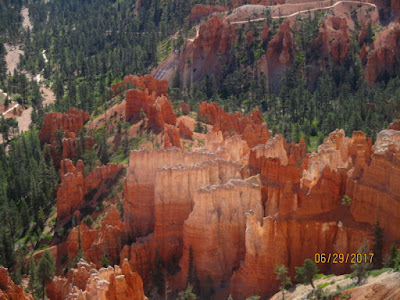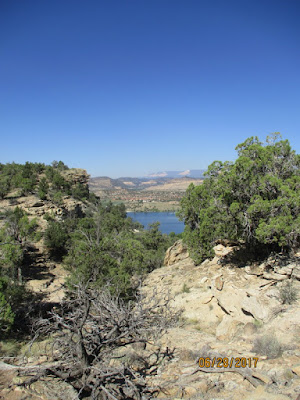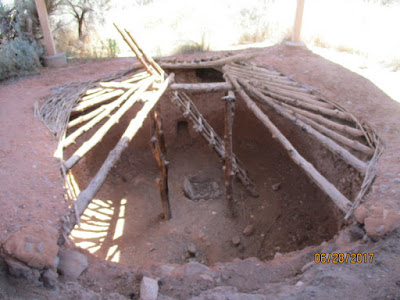Holey! Moley!
I do not think I can describe this National Park without using the words incredible, mind-blowing, awesome, gorgeous, spectacular, stupefying, etc. I will attempt to avoid these words but I am sure you get the picture anyway...
The New Park's Magical Opening:
On June 1, 1925, a 315 car caravan, led by then Governor George Dern, arrived at the Red Canyon tunnels to celebrate the opening of Utah National Park, (later renamed Bryce Canyon National Park).
A flower-strewn gate closed the entrance to the tunnel and a banner proclaimed, "Welcome to Utah's Fairyland."
Children dressed as Fairies tied flowers and long ribbons to the bumper of the governor's car. When the governor pronounced his belief in fairies, two young elves opened the gates while a band began to play. Dancing fairies pulled on the streamers to draw the car through the tunnel. (Men pushed the car from behind). The Red Canyon tunnels have served as a magical entrance to Bryce Canyon from then on.
Bryce Canyon is actually not a canyon, but a series of amphitheaters that are etched into the pink Claron limestone of the Paunsaugunt Plateau.
Fiery colors and endless vistas give way to a spectacular, breathtaking display of dreamy landscapes.
Fairy tale castle-like rock formations known as 'hoodoos' capture your imagination as standing stones rise from fiery red earth.
Infinite variations of color and shape erode into a mysterious amphitheater of what many describe as sacred ground.
The rim of the canyon is at 8000 to 9000 feet.
Drops to the canyon floor are 1000 feet or more.
Gary and I could see many hikers down below but I wasn't ready to do that steep of a climb.
But it certainly is worth seeking out.
We left Daisy and Lady Daga behind in the RVs and took advantage of the free shuttles that carried us from one end of the canyon to the other.
"...in this thirsty land, water has been the prime creator of scenery.
Water formed these sedimentary rocks under ancient seas, and water sculptured them as they rose.
Water carved the buttes and mesas, chiseled Bryce Canyon into every shape known."
--Peter Farb, "Face of North America" 1963
Incredible, Mind-blowing, Awesome, Gorgeous, Spectacular, Stupefying!
A few miles after leaving Bryce Canyon, Gary and Lady Daga waved good bye. They headed east back toward New Mexico, Daisy and I started the long hot trek across the California Desert.




























































